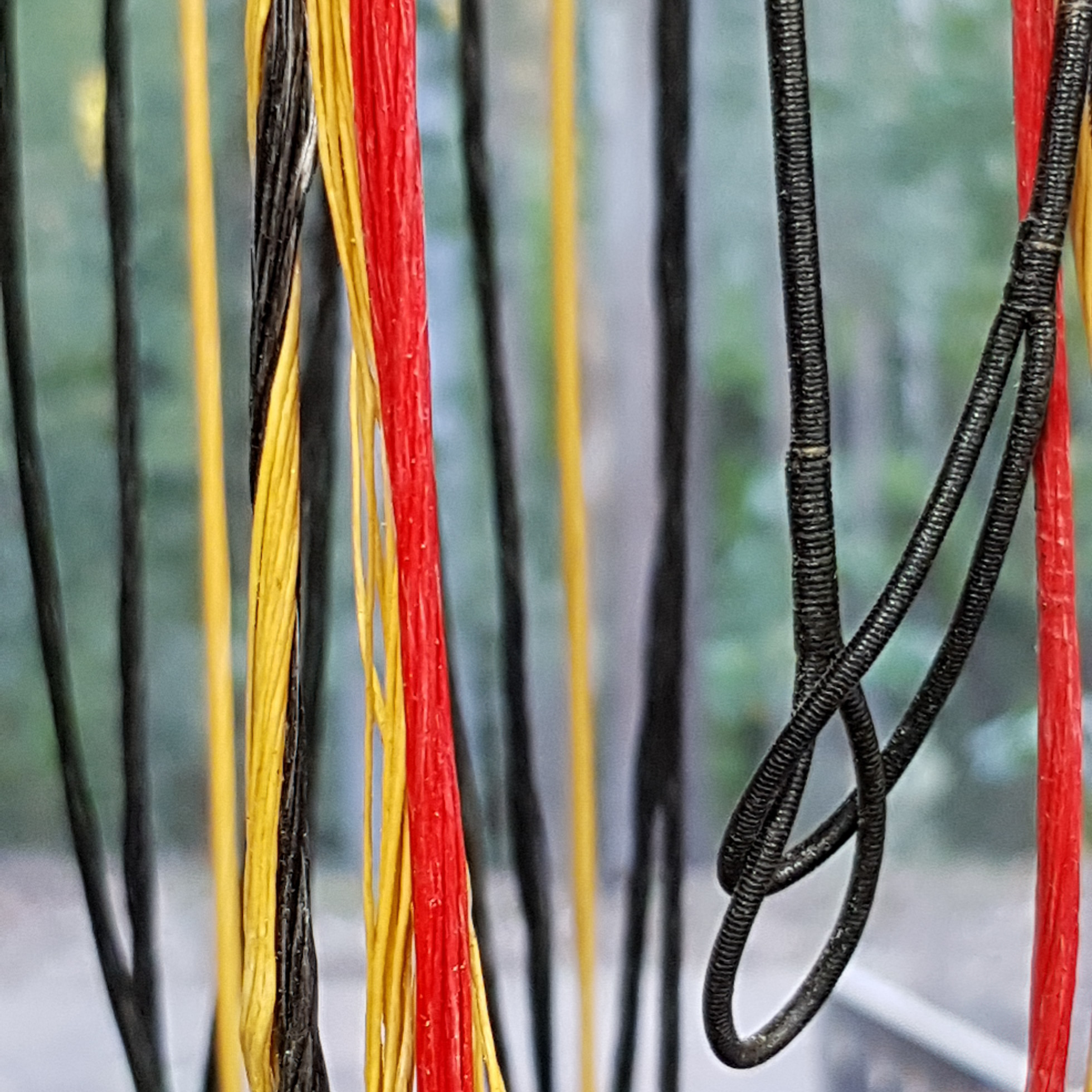Gecko Twisted Strings
The right string makes a lot of diference, all Gecko Twisted Strings are carefully made to suit the individual Longbow.
It is important to get the right size for the bow, correct brace height along with the arrow nock fit and number of strands. Varying the number of strands will change the weight and response of the string, fast or slow.
The following details describe the various aspects to a good string and will help you when making your own strings.
–)->

Material
For the best results use the best materials. Gecko Twisted strings are made from BCY materials.
BCY 452X – Compound Strings
BCY 8125g – Recurve, fibreglass backed/laminated longbows
BCY 652 – Recurve, Barebow and Longbow
| Nock Size | Strands | Serving |
| 1 Thin | 16 8125g/652 | 0.019 Halo |
| 18 8125g/652 | 0.014 Halo | |
| 20 8125g/652 | 0.007 Halo | |
| 2 Thick/Large | 16 8125g/652 | 22th Halo |
| 18 8125g/652 | 0.019 Halo | |
| 20 8125g/65220 – 8125/652 | 0.014 Halo0.017 Halo – For LB | |
|
|
|
|
Length
Set Jig to required length, which is ? measure point to point (same place).
Some jigs require more allowance than others, pin sizes, string material, jig flex and tension on strings all affect the length.
If measuring from an old string make sure you untwist string before measuring it. Add the extra length allowance to suit the jig used.
Is the old string at correct Brace height for the bow, does it need to be modified?
Strands
Made in combination with the serving to suit arrow nocks and feel of shot by archer. What suits you.
More strands gives slower more forgiving string –> strengthens/stiffens arrow
Less strands gives faster less forgiving string –> weakens arrow
Wind on evenly with no overlaps and even tension, ensure tension has been evened out before serving.
Commonly 18-20 strands occasionally see 16 strands for fast string 652/8125g
Two colour strings – cover twists under end loops. Take your time and be carefull to get good results
Loops
Top loop is bigger than the bottom loop. Big enough to slide along the limb when taken off string groove in limb tip.
Twists
The string should be twisted in the same direction as the serving material.
Which way for a left or right handed archer?
The string will tighten at one end and loosen at other end due to fingers of archer.
Does it matter what is at top or bottom? (top tighter or looser?) Consider the serving and/or the nock position.
RH twists mean a RH archer will tighten string at top? Loosen at bottom. Nock therefore rises slightly.
For RH Archer use RH thread on serving. Tightens at top on finger slip around string when releasing
For LH Archer use LH thread on serving. Tightens at top on finger slip around string when releasing
String Twist
Options
1.
\\\\\\\\\\\\\\\\\\\\\\\\\\\\\\\\\\\___ The string is twisted when turned anti-clockwise from end loop looking towards string (string going away behind loop). Note this forms a right hand thread. (RH Archer)
2.
___
/////////////////////////////////// The string is twisted when turned clockwise from end via loop looking towards string (string going away behind loop). Note this forms a left handed thread. (LH Archer)
Serving
Serving should be applied consistently, serve around string in same direction for both ends and centre serving to match twists to be applied to string.
The center serving should be applied after a few twists have been applied to string (10-20 for normal competitive recurve) and you have stripped the excess wax from the main string (this will also help smooth or round out the string).
End servings
What matters is that the serving applied when/after ends are looped goes in the same direction as twists will be applied. Ensure the length aligns to the bow, for a Recurve make sure the length of end servings covers the string where it touches the limbs, any extra serving adds weight and can slow the string.
RH Archer
–>
\\\\\\\\\\\\\\\ \\\\\\\\\\\\\\\\
// ===String===\\N\\N\\\\\\\======== //
\\\\\\\\\\\\\\\\\\\\ Serving \\\\\\\\\\\\
Top <– Bottom
The serving pattern above should be used with Twist option 1. (Which way is the twist wanted or the serving jig used)
Slight overlap to minimise bulge on serving going over to unserved string. (Wear point). If the overlap causes a bulge point this may cause the string to not follow the center of limbs during a shot, avoid this by serving with no overlap.
LH Archer
<–
///////////////////// /////////////
\\ ===String===//N//N///////========= \\
/////////////// Serving ////////////////
Top –> Bottom
The serving pattern above should be used with Twist option 2. (Which way is the twist wanted or the serving jig used)
Slight overlap to minimise bulge on serving going over to unserved string. (Wear point).
If the overlap causes a bulge point this may cause the string to not follow the center of limbs during a shot, avoid this by serving with no overlap.
Centre serving
Applied after initial twists (10-20) are put in string, waxing and clean up of wax on string. Use spare off cut to burnish and round string before applying serving.
Commonly this is done with the string on the bow. Check that the top and bottom are at the right positions for protecting the string from fingers and rubbing on arm/guard.
The serving should be wound in the same direction as the twists in the string to ensure it does not come loose.
NOTES:
• Don’t forget – make 2 strings at the same time with same build method so you have a spare that is as close to the other string as possible.
• Don’t make a string with servings done in different directions on end.
Any questions – ask a coach you can trust!

